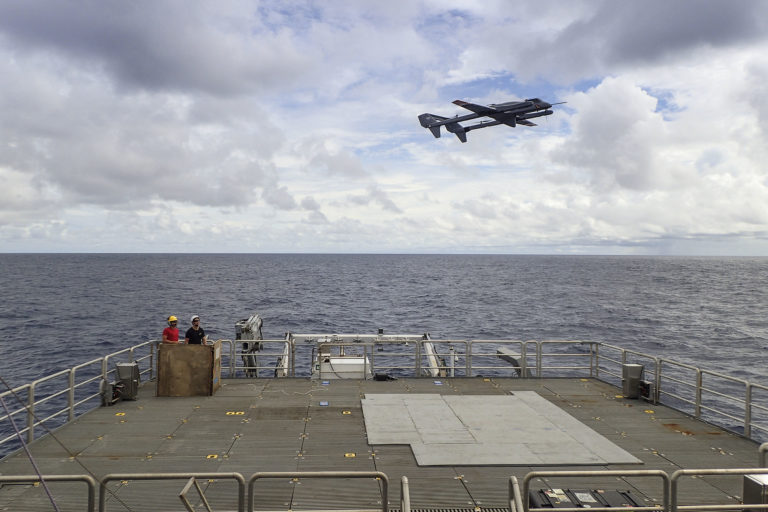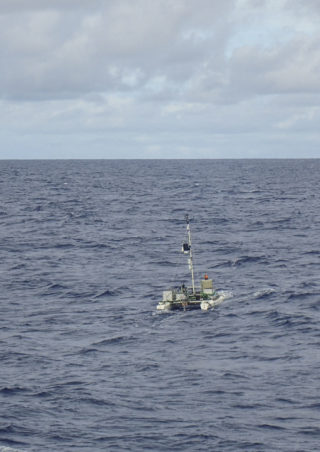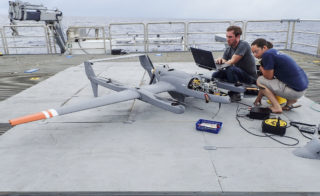It was 1430 hours when the drone took off, loaded with an array of instruments designed to gather data for a period of three hours. “Now I’m excited!” said Chris Zappa, whose working group is in charge of modelling the factors governing air-water gas transfer in physically complex ocean systems.

Falkor arrived today to the long-awaited Station 9, the first planned location for study after the long transit. After a 5 day transit, the team was eager to resume their activities in the open ocean. Working in oceanography calls for flexibility, which has been the core of Station 9.
Twenty-five knot winds and a sea state of 4 WMO (World Meteorological Organization) welcomed the vessel this morning. Although that code stands for a moderate sea state with waves of up to 2.5 meters, the conditions still posed considerable challenges for the deployment and well being of some of the instruments. The kayak was able to collect water samples before sunrise, but with sunlight came rougher conditions, so the rest of the science teams decided to wait.

Testing 1, 2, 3
The UAV’s primary mission onboard is to take Zappa’s instruments away from Falkor to undisturbed waters and bring them back safely. But the Latitude team is also interested in learning more about the capabilities of their drones. This morning’s conditions were pushing their threshold of operational limitations as far as waves and winds went. Moreover, the planes are requested to fly at an altitude of 10,000 feet, which would give the pilots very few seconds to react in case a problem arose.
That is precisely why pilot Justin Armer decided to do a trial half-an-hour flight leaving Zappa’s instruments behind. When the UAV came back, Justin knew he would be comfortable flying in even worse conditions and the flight was a success. Just in time to get Station 9 going.
Permission Granted
In the afternoon the conditions were calmer and no time was spared to get science going. The Catamaran, Snifel, Atreyu, all were deployed while the UAV kept completing its flight plan. Four hemispheric radiometers were integrated into the UAV, in order to measure radiation (heat) coming down from the atmosphere and out of the ocean.

As the sun heats the ocean, processes such as radiation, evaporation and sensible heat fluxes act to moderate the surface of the ocean. Zappa’s working group is interested in understanding how much of the heat coming from the atmosphere is reflected back by the sea surface and how much is absorbed by the ocean. That is important because a hotter ocean is bound to exchange more gases with the atmosphere as it expands, and also because some of the energy reflected by the water will be retained by greenhouse gases in our atmosphere, ultimately contributing to an increase in temperature on our planet.
At 1730 the UAV was piloted back, the winds were picking up and a storm was taking shape in the horizon. Justin is used to landing his planes in the middle of the desert, not on the reduced area of Falkor’s storage deck. He quotes an old saying from pilots: “Flying is hours of boredom punctuated by moments of sheer terror.” He is certainly not afraid when he lands the UAV safely and smoothly, reaching two different goals at once: it was the first time Zappa’s instruments were mounted on this type of drone and launched from a ship and it was the first mission completed by the HQ-60B.


